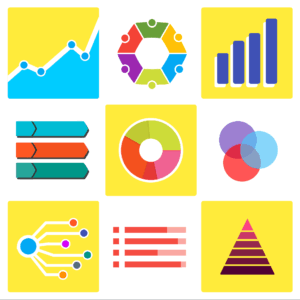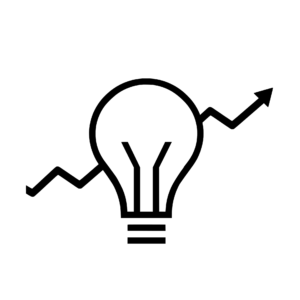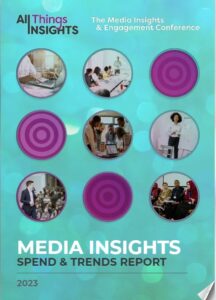There may always be a level of uncertainty as we move towards the holiday season and look beyond to consumer trends for 2026. Understanding the consumer and uncovering next year’s trends is key to market research’s goals for the year ahead.
To that end, All Things Insights spent some time chatting with Stephanie Siew, Senior Research Executive, WARC, and a member of the team that put together WARC’s “2025 Consumer Trends Report,” to examine this year’s trends and discern what might be ahead. WARC provides insight, intelligence, evidence, expertise, case studies, benchmarks and guidance to help marketers navigate.
WARC’s report explores the key issues that will influence consumer purchase decisions across brands and categories over the next year. It is based on a comprehensive set of GWI surveys combined with WARC’s research, case studies, and analysis. WARC is part of LIONS, which is part of Informa Festivals, a trading division of the Informa Group. All Things Insights is also part of Informa Festivals.
All Things Insights: Can you identify some key consumer trends from your report for this year and beyond?
Stephanie Siew: In the report, we discuss five main shifts that we expect to impact consumer purchase decisions over the coming year. Firstly, the widening income gap in most major economies means spending power is increasingly polarized. Facing a financial squeeze, many lower- and middle-income households are more open to switching brands and buying private label goods.
Another significant trend is the rising credibility of individual creators, with consumers increasingly trusting and relying on influencers and content creators for recommendations and purchase decisions.
Furthermore, as AI becomes even more entrenched in the lives of consumers, we expect AI agents and assistants to take on a bigger role in the purchase journey as they carry out tasks like booking flights and purchasing groceries autonomously.
In the space of health and wellness, consumers across generations are prioritizing preventative healthcare and investing in products like vitamins and supplements in an effort to be as healthy as possible, for as long as possible. We’re also seeing a rise in alternative social activities such as outdoor group activities and hobby-based gatherings as younger consumers seek out more meaningful ways to connect with each other.
All Things Insights: In your latest trends report, which consumer behavior shift do you find most undervalued, yet critically important for brands to address in 2025-2026?
Stephanie Siew: How purchasing power shapes value perception is an often-overlooked nuance in discussions about the impact of economic uncertainty on consumer spending intentions. Deepening income inequality means different consumer segments will have increasingly different priorities when making a purchase. For example, GWI data shows that 51% of high-income consumers say they are loyal to the brands they like, compared to 40% of those in the low-income group. High earners also allocate a much bigger proportion of their spending towards lifestyle and experiences, spending up to five times more than the average person on clothes, electronics, and homewares.
On the other end of the spectrum, lower-income consumers are more likely to prefer a cheaper own-brand product over a known brand. That said, our changing perception of value isn’t solely tied to price. The concurrent growth of premium private label, for instance, suggests that other factors like quality play a big role as well. For brands, building strong brand equity can help reduce price elasticity and manage volatility in consumer spending behavior.
All Things Insights: What are some of the uncertainty and challenges in the market that consumers are dealing with right now?
Stephanie Siew: Inflation, rising living costs, and geopolitical conflicts continue to be top-of-mind concerns for consumers. Data from GWI shows that more than half (54%) of global consumers think the economy/cost of living is the most important issue facing their country at the moment. Adding to this worry is the uncertainty surrounding rapidly changing trade policies and tariffs, which could potentially increase costs for consumers and impact job markets.
All Things Insights: Which psychological triggers do you see gaining importance in consumer decision-making as we move toward 2026?
Stephanie Siew: Consumers show a desire for intentional spending and greater control over various aspects of their lives, from how they consume information to how they manage their well-being and connect with others. We’re seeing more emphasis on trustworthiness and authenticity, particularly with the rising influence of individual creators. People rely on these independent voices because they are perceived as more genuine and transparent. The pursuit of meaningful connections through interest-led activities and a proactive approach to preventative health also stand out as key drivers behind decision-making.
All Things Insights: How are you advising brands to balance short-term marketing tactics with long-term brand building in this rapidly evolving consumer landscape?
Stephanie Siew: While economic uncertainty and cutbacks in consumer spending might incentivize marketers to accelerate performance marketing spending for immediate returns, evidence shows that an overreliance on these tactics can lead to missed growth opportunities.
Instead, a combination of equity-led and performance advertising yields the strongest outcomes, with WARC research finding a median ROI uplift of 90%. Our analysis also suggests that at least 30% of budgets should go to equity-driving ads, with 40% to 60% being a typical best practice range. The optimal allocation will depend on various factors, such as the brand’s existing levels of equity.
Beyond budget allocation, brand and performance need to work together in an integrated way. Building equity should take the lead in advertising strategies, supported by performance ads that reinforce the brand’s identity, values, and emotional connections.
All Things Insights: Based on your trend analysis, which marketing channels or approaches do you believe will offer the highest ROI for brands in the next 18-24 months, and why?
Stephanie Siew: The creator economy stands out—nearly half of social media users have purchased products based on influencer endorsements, with trustworthiness ranking among the top three factors influencing purchase decisions. Campaigns like Dove’s #TurnYourBack, for example, show how influencers can be an effective way to improve the brand’s credibility, reach, and sales.
Experiential marketing is another promising channel, tapping into consumers’ desire for meaningful connections and new social activities. Hobby- and interest-based social clubs are among the emerging touchpoints that brands can leverage to create memorable brand experiences and foster community.
Finally, marketers can explore optimizing search strategies for AI platforms. With more consumers relying on AI for product information and decisions, ensuring visibility and favorable representation in AI-generated search results will be crucial.
Editor’s Note: All Things Insights would like to thank Stephanie Siew, Senior Research Executive, WARC, for discussing this report. More information about the 2025 Consumer Trends report can be found on WARC. For the full report (behind the WARC paywall), click here. For a short summary article about the report (free-to-access), click here.
Video: “Top global consumer trends 2025: 40 pages in 3 minutes,” courtesy of Euromonitor International.
Contributor
-

Matthew Kramer is the Digital Editor for All Things Insights & All Things Innovation. He has over 20 years of experience working in publishing and media companies, on a variety of business-to-business publications, websites and trade shows.
View all posts





























































































































































































